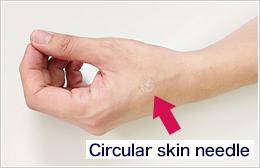About tooth decay pain

If you experience a throbbing toothache even when you are not doing anything, or if your gums bleed when you brush your teeth, you may have tooth decay or periodontal disease.
If you leave tooth decay untreated, it will continue to progress. It will never heal naturally, so if you suspect you have a cavity, get it checked as soon as possible. Early treatment can shorten treatment time, pain, and costs.
About tooth decay treatment
There are various methods for treating cavities, but the basic approach is to "remove" the decayed area. Once a hole has opened up, it will not heal naturally.
If the enamel is only slightly demineralized and there is no actual loss, it may be possible for it to remineralize (remineralize) and return to its original healthy enamel, but basically, the pathological tooth tissue that has been invaded by bacteria must be thoroughly removed so that none is left behind.
Treatment methods for each stage of tooth decay
In case of small cavities
Immediately after removing only the decayed part of the tooth, we fill it with composite resin . The shape of the tooth is adjusted and the treatment is completed by applying light to harden it. Treatment only requires one session.
In case of moderate tooth decay
Only the decayed part of the tooth is removed, and a dental impression is taken to create a filling (inlay) that fits perfectly into the removed area. Composite resin and silver alloy (also known as silver fillings) are mainly used for fillings, which can be covered by insurance, but for private treatment, beautiful and functional materials such as ceramic inlays , hybrid ceramics , and gold alloys can be used. The treatment takes about two sessions.
In case of large cavities
In order to prevent the tooth from cracking, the tooth is shaved and a cap is placed. A dental impression is taken to create the cap. The most common materials used are hard resin veneers and silver alloys, which are covered by insurance, but by using all-ceramics and gold alloys , which are available for private treatment , it is possible to recreate more beautiful teeth with a comfortable bite. Treatment requires several visits.
How to treat severe tooth decay
If the cavity is very large and has completely reached the nerve, we will perform a treatment to remove the nerve. We will not extract the tooth. We will only extract the nerve.
When the X-ray examination shows that the cavity has barely reached the nerve, we will administer anesthesia and carefully remove the cavity. We may wait a few days to see if there is any pain. (In some cases, we may place the final filling on the same day.)
If there are no particular problems, we will fill the hole or insert metal while preserving the nerve at a later date.
However, in rare cases, pain may occur, and unfortunately, in that case, we will have to perform treatment to remove the nerve.
Basically, teeth last longer if the nerve is intact, so we will try to preserve any nerves that can be saved.
Cost of treatment for tooth decay
Moderate tooth decay and
no need for nerve or root treatment
If you need fillings, caps, or implants, you will need to visit the clinic 1 to 4 times.
If your tooth is severely decayed and
requires treatment for the nerve or root of the tooth
If you need fillings, caps, implants, root canal treatment, or treatment to create a base for your teeth, you will need to visit the clinic 2 to 4 or more times.
*The above is an approximate treatment fee when covered by insurance and 30% of the cost is paid by the patient.
The treatment period is also a guideline and may differ from the above depending on the treatment method and severity, so please consult with your doctor or counseling staff.
For those who are still afraid of dentists!
Have you been putting off treatment because you think, "Dentists are painful! They're scary! I hate them!"
At our clinic, we aim to provide injection anesthesia that is so painless that you'll ask, "Did you already get anesthesia?" Please feel free to contact us.
Email consultations available
Acupuncture to reduce post-treatment pain and swelling
Tips to reduce the pain of treatment
On the back of the hand, a little outside the base of the bone between the thumb and index finger, there is an acupuncture point called Gokoku. If you press this point when you have a toothache, the pain will be relieved. Although it is not widely known, dentists can also use acupuncture to treat the maxillofacial and oral areas. Acupuncture is considered to be a very useful treatment in dentistry.
At our clinic, we perform acupuncture treatment by attaching circular needles to the Hegu point.
A circular needle is a needle that is inserted into the skin, and it is a round tape with a very thin and short needle attached. Since it is only inserted into the skin, there is no pain when moving, and you can take a bath and go about your daily life as usual. (You can leave it on for about a week.)
This is especially recommended for those who have had tooth extraction or nerve removal (pulpectomy) treatment. We only offer this treatment to patients who request it, so please feel free to consult us.
(※Effects may vary from person to person.)



